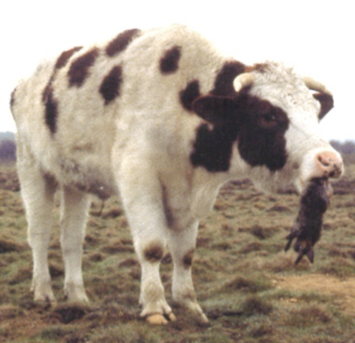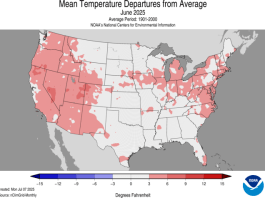 It’s the time of year we eagerly anticipate, as winter moves into hibernation and spring awakens. The greening of the grass, the song of spring peepers, gobbling turkeys, mushroom hunting, fish biting and warmer days are all blessings we look forward to. In the year of the sheep, a new beginning is soon to arrive with lambing season on the horizon. It’s a paradoxical season both anxiously awaited and yet one whose completion is eagerly anticipated. There’s a lot to talk about, so let’s dive into a little more about it.
It’s the time of year we eagerly anticipate, as winter moves into hibernation and spring awakens. The greening of the grass, the song of spring peepers, gobbling turkeys, mushroom hunting, fish biting and warmer days are all blessings we look forward to. In the year of the sheep, a new beginning is soon to arrive with lambing season on the horizon. It’s a paradoxical season both anxiously awaited and yet one whose completion is eagerly anticipated. There’s a lot to talk about, so let’s dive into a little more about it.
Traditionally, and still to a large degree today, lambing is conducted in barns in the winter months of January and February. This helps them hit the Easter market with a fat, freshly weaned lamb. However, there are some reasons we might consider other options. The first is, if you are trying to be a low-cost producer and match your animal production in sync with nature and forage growth cycles (I’m speaking from the standpoint of a producer in the fescue belt so this will apply largely to those of us in the eastern third of the country with a cool season forage base), lambing in winter poses challenges. The ewe’s nutritional requirements are highest when feed is naturally most scarce naturally and therefore most expensive. Lambing inside also requires lots of overhead and labor and can lead to more disease problems, such as coccidiosis, if not done correctly.
The second reason is the traditional market was based on larger wool breeds. As more people switch to hair sheep, it’s helpful to look at the lamb market and what different lambing dates mean to profit. In general, the lamb market is at its lowest in the summer months and climbs as fall progresses into high market prices in winter. That means, to get the best prices, if you are lambing hair sheep in winter you must push them (usually with expensive feeds) to have them ready for the Easter market. If you don’t push them,d they’re ready for market just as low summer prices hit. Either situation can cost you.
An alternative option is lambing in spring
 Our ewes start lambing May 1. Why? Lots of reasons.
Our ewes start lambing May 1. Why? Lots of reasons.
First, it seems to match their natural breeding cycle. Sheep are seasonal, short-day breeders. Though you can breed them out of season and have success, nature’s original way is for them to breed when daylight is shortening. By turning bucks out in early December, we get an early May lamb. This allows for a very short breeding and lambing season. Most of our lambs are born in a 10-14 day period.
Second, in delaying lambing until May 1, we are accomplishing several things. lambing season coincides with forage growth. The ewes lamb in the pasture and, in our climate, with cool season grasses such as fescue dominating, there is usually plenty of forage by the first of May. This schedule also ensure ewes have the nutritional support they need. Ewes can take advantage of new spring grass growth in March and April to restore body condition and grow strong fetuses before lambing. Forage growth is also optimum for good mothering. Lambing later in May or June risks forage becoming so tall and rank that newborn lambs become mis-mothered more easily. In early May when forage is shorter, lambs can navigate and follow their mothers more easily.
Finally, profit potential is higher. A May-born lamb hits the late fall/winter market with relative ease.
Our May 1 lambing target means we are lambing when quality forage is readily available and cheap, our tight lambing season matches natural sheep biology, and we have a product that is readily saleable at market highs.
Lambing and paddock moves
Normally, during the months of March through early August, the ewes are moved every day to new grass. After weaning in early August and through the fall and winter, they are moved less frequently depending on the situation, but usually every two days. I’ll talk about that more in the future.
The exception to moving them every day from is during lambing. I still like to move them every couple of days but while they are lambing, I like to give them two, maybe three paddocks so they can spread out to have their lambs. This makes incidence of mismothering and lamb stealing a little less common. It also gives the lambs time to bond with their mothers. I do not like the idea of set stocking at lambing because I feel there can be too much risk of parasite infestation and the nutritional quality of forage decreases daily with grazing.
When it is time to move the lambing ewes to new grass, I open the next paddock and let them come at their leisure. New mothers will often stay behind with their lambs and bring them along after the pregnant ewes and mothers with older lambs have moved on. I close the back paddock gate later the same day. If there are a few stragglers that haven’t moved up, I will gently drive them to catch up to the rest of the flock.
A bit about our ewes
Ewes are different in their abilities to be good mothers. Mature ewes tend to be better mothers than ewe lambs having their first lamb. We really like ewes that keep their newborn babies very close when they move, almost as if they were glued to their sides. In our pasture lambing situation, if we could somehow control it, we would choose to have twins on every ewe and never have triplets. Triplets bring about many challenges, and they are harder on the ewes especially because they get no extra help in raising them in the form of supplemental feeding. Sometimes we will pull a triplet off and sell it as a bottle lamb. It is easier on the ewe to raise twins and we would rather have two strong lambs as opposed to three substandard. Granted, some ewes raise triplets just fine, but they seem to be the anomaly rather than the norm.
Next time we’ll continue with lambing issues, tagging lambs and some other things to watch for during lambing season.
Here’s the rest of this series:




